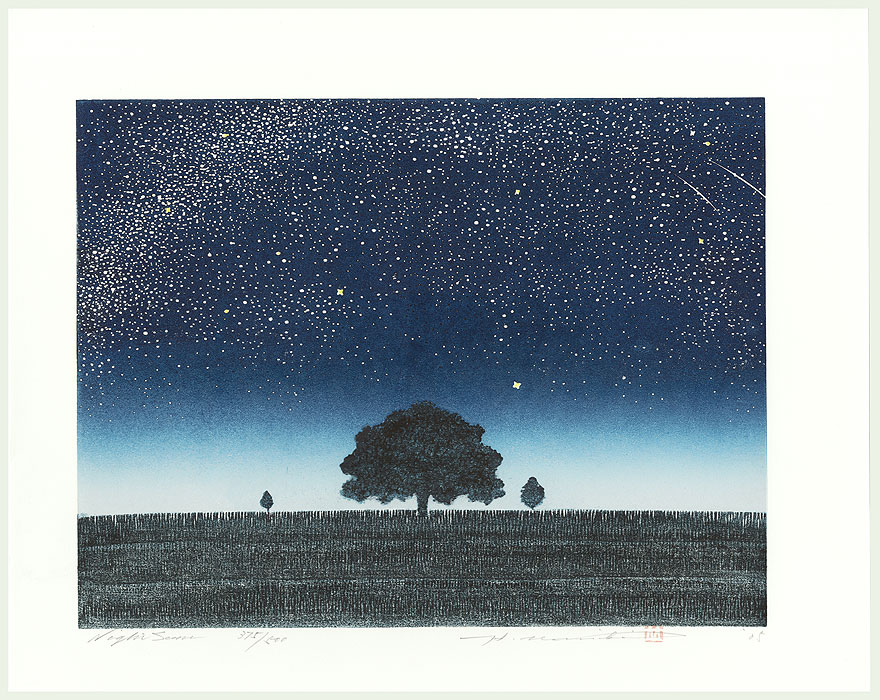Autumn in Japan does not arrive all at once — it steals in quietly at night, when even the stars seem to open different eyes.
星既に秋の眼をひらきけり
hoshi sude ni aki no manako wo hirakikeri[1]
already the stars
have opened
autumn eyes…
—Ozaki Kōyō[2]

On the traditional calendar which the haiku world still uses, autumn starts around the second week of August.[3] In the old idea, the peak of the season is the end of the season, and the downward journey towards the next one is included in the next one. That may seem strange to us today, but it’s really no stranger than the way we divide the seasons, just different.
As we move from the peak heat of summer slowly down towards the cooler autumn weather, we primarily notice the change at night first. Long before the leaves start to change or we feel the need to get the scarves out, we might notice a slight hint of cold in an evening wind or a chill at night. It’s more of a vague feeling at first, but when we notice it, we get that feeling: ah — autumn is here.
This poem I think highlights that well. Day time might still be burning hot, but when the stars come out and bring the cooler temperature with them, we notice the season is shifting.
Born in 1868 in Tokyo as Tokutarō Ozaki, Ozaki Kōyō was a novelist and poet who also left behind a small but striking body of haiku. While he is best remembered as a central figure of the Ken’yūsha literary group and for novels such as Konjiki Yasha (The Golden Demon), Kōyō’s sensitivity to seasonal imagery and emotional nuance also found expression in his haiku. His verses often blended classical elegance with the realism of the modern age, reflecting his broader literary style. Despite poor health, he continued writing until his death in 1903 at the age of just 35.
-
This is called risshū (立秋) under the old system which also named 24 miniseasons and 72 microseasons. ↩